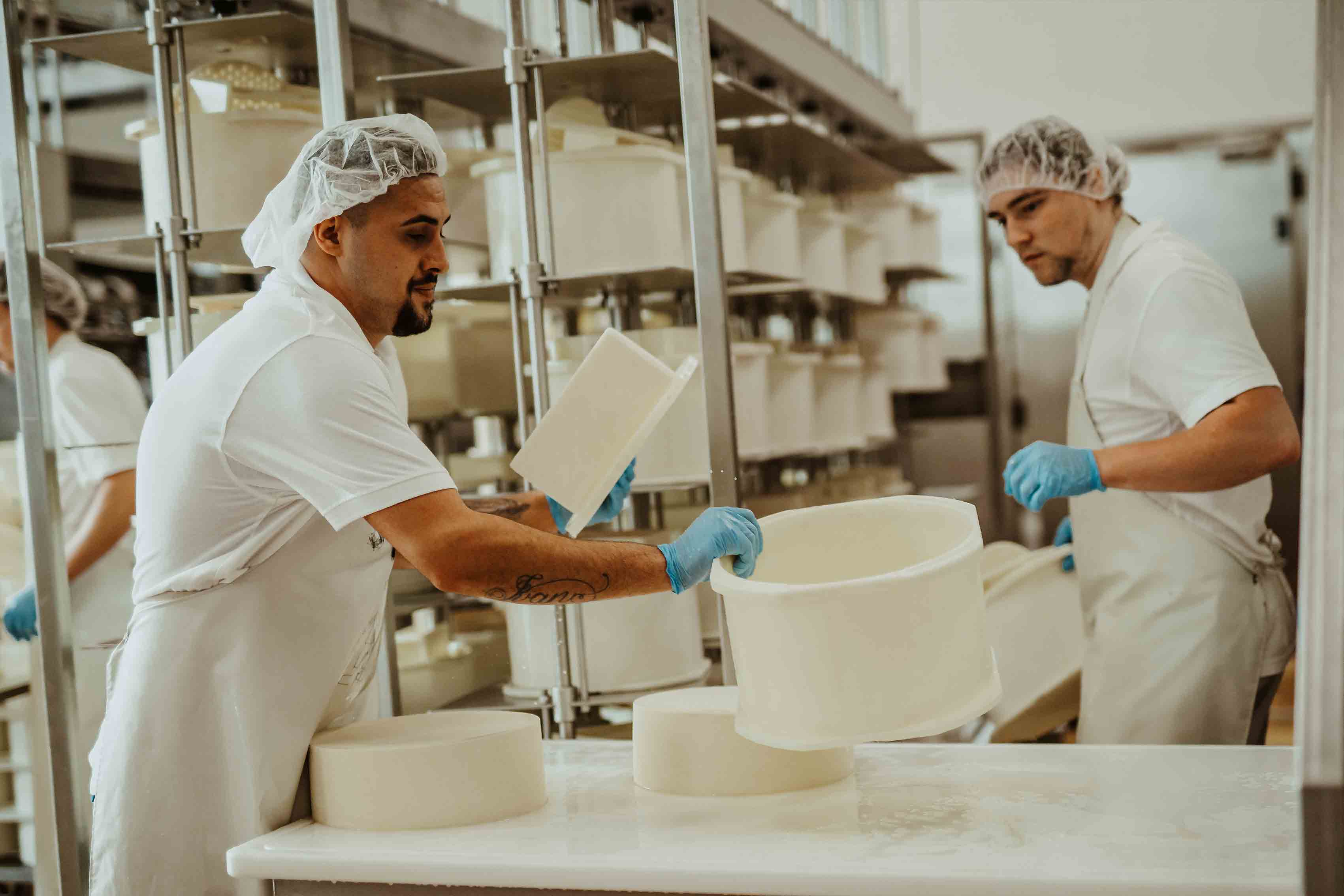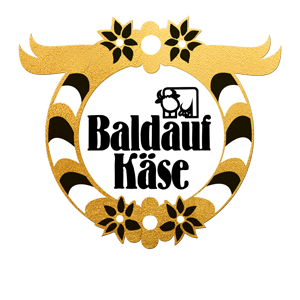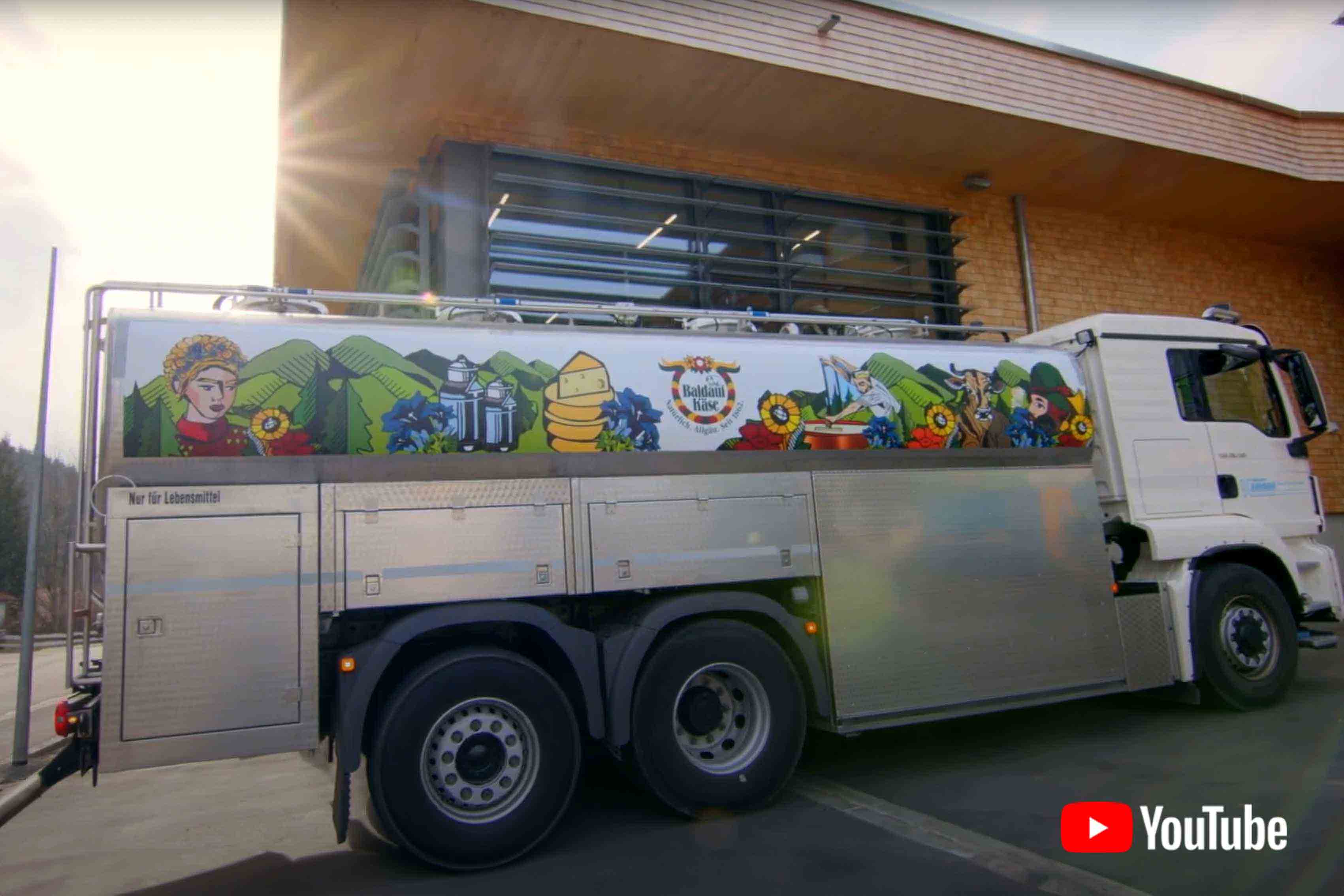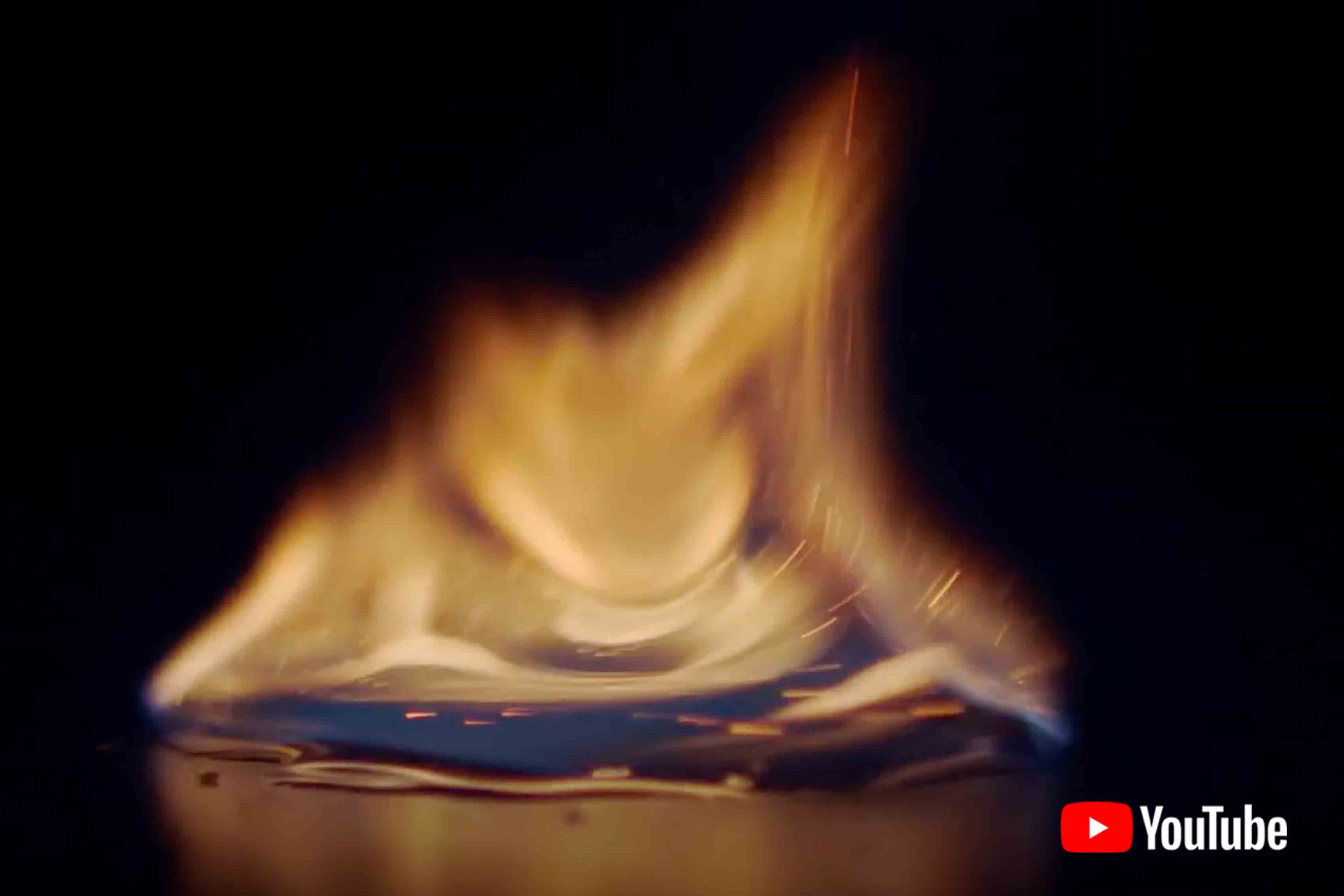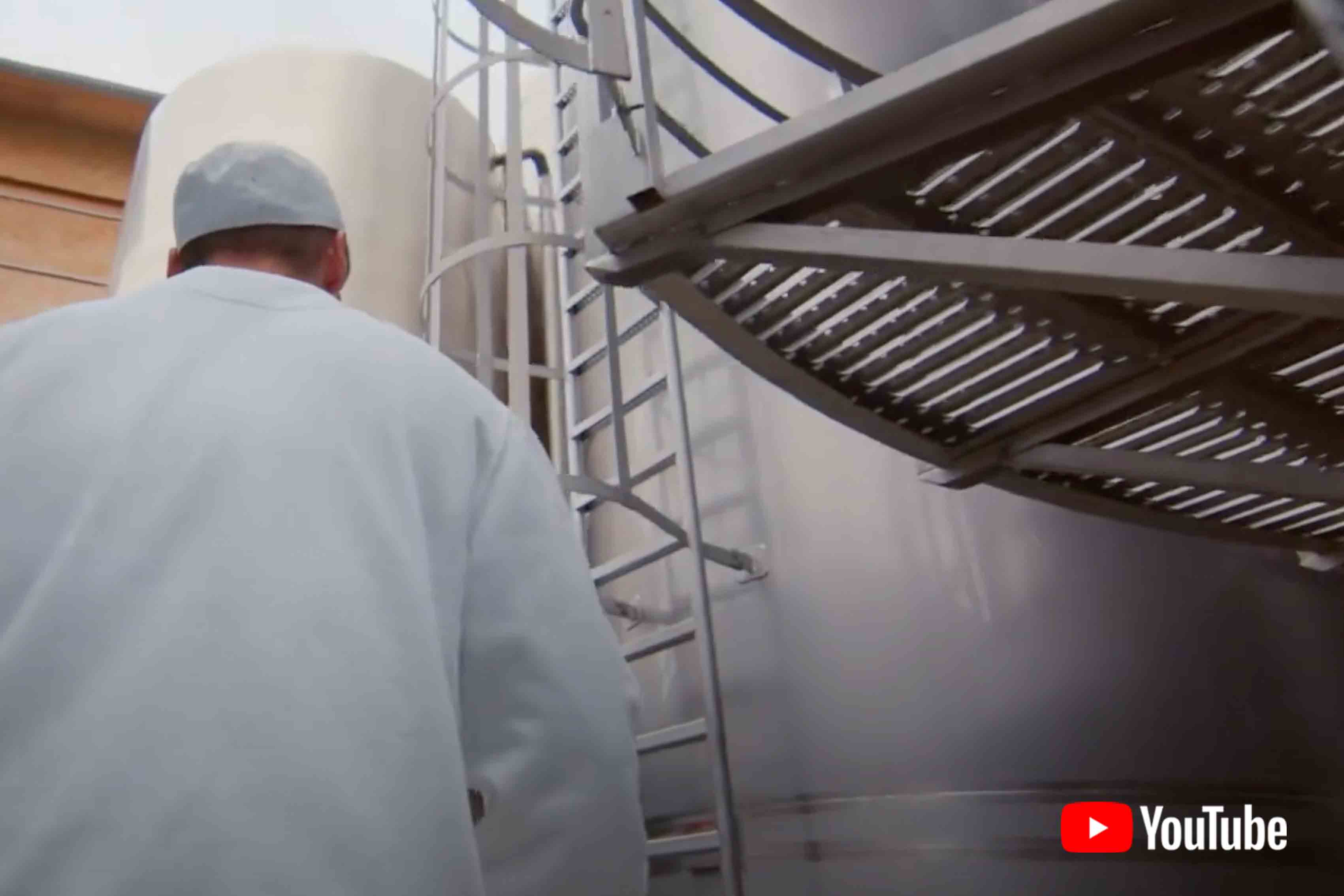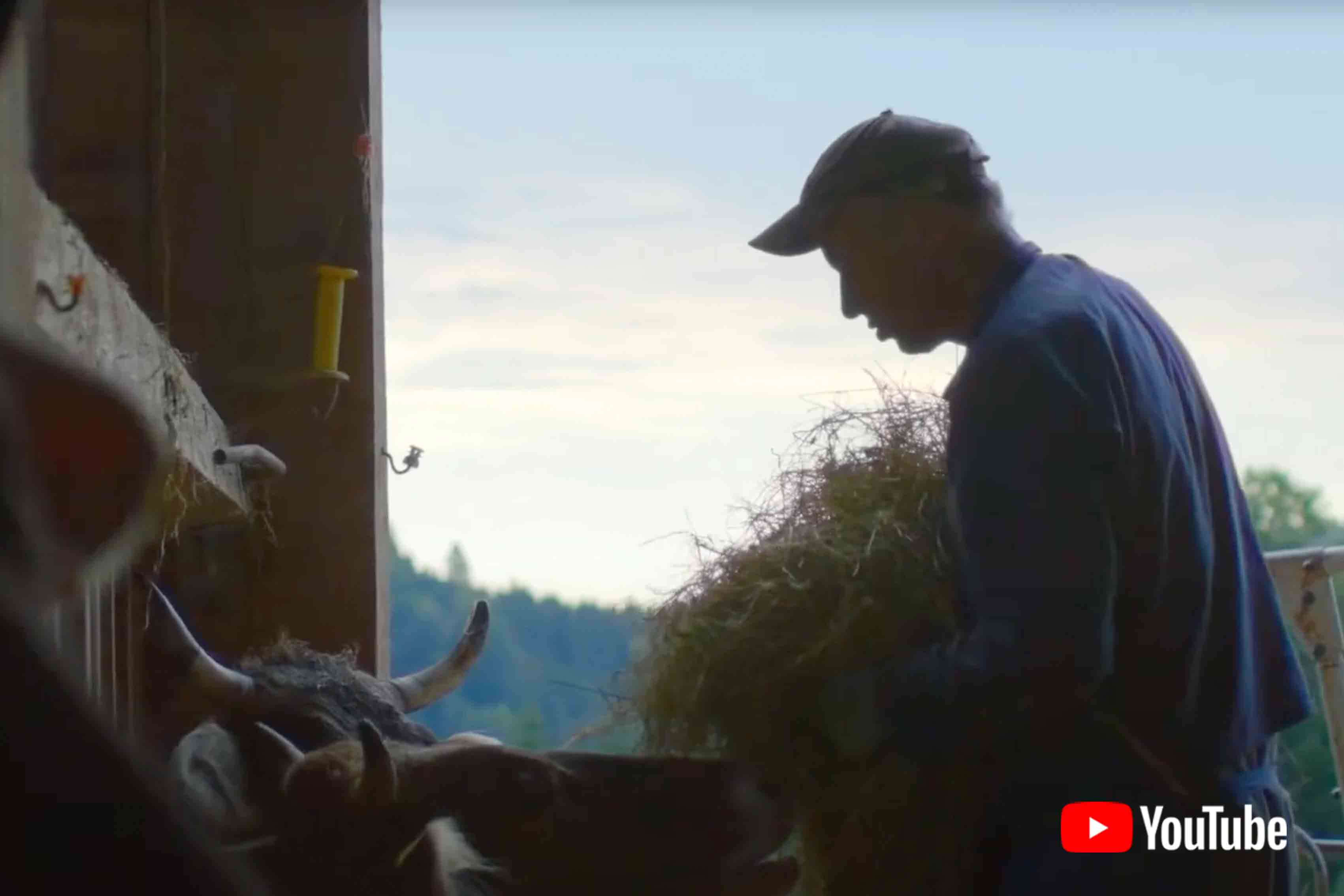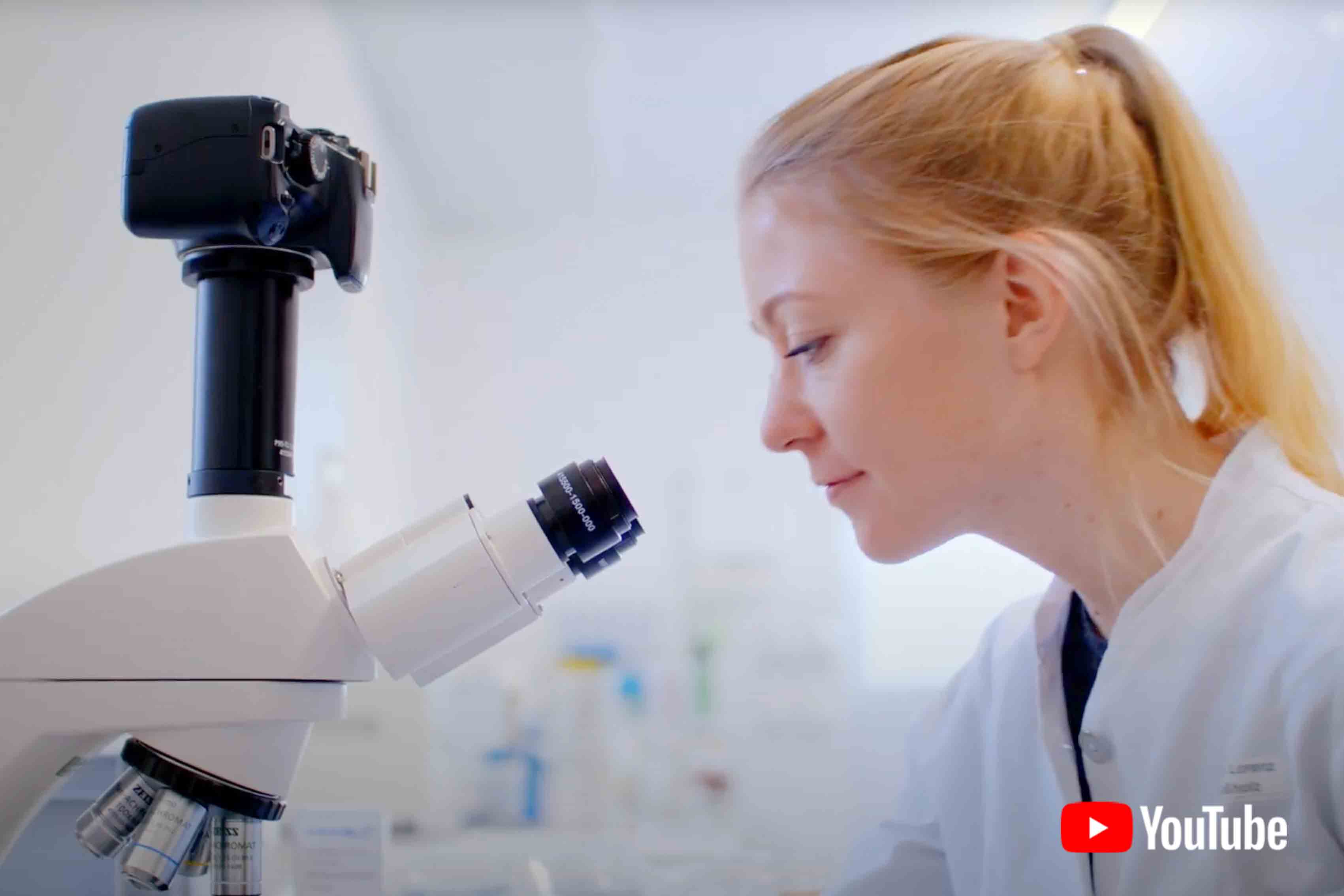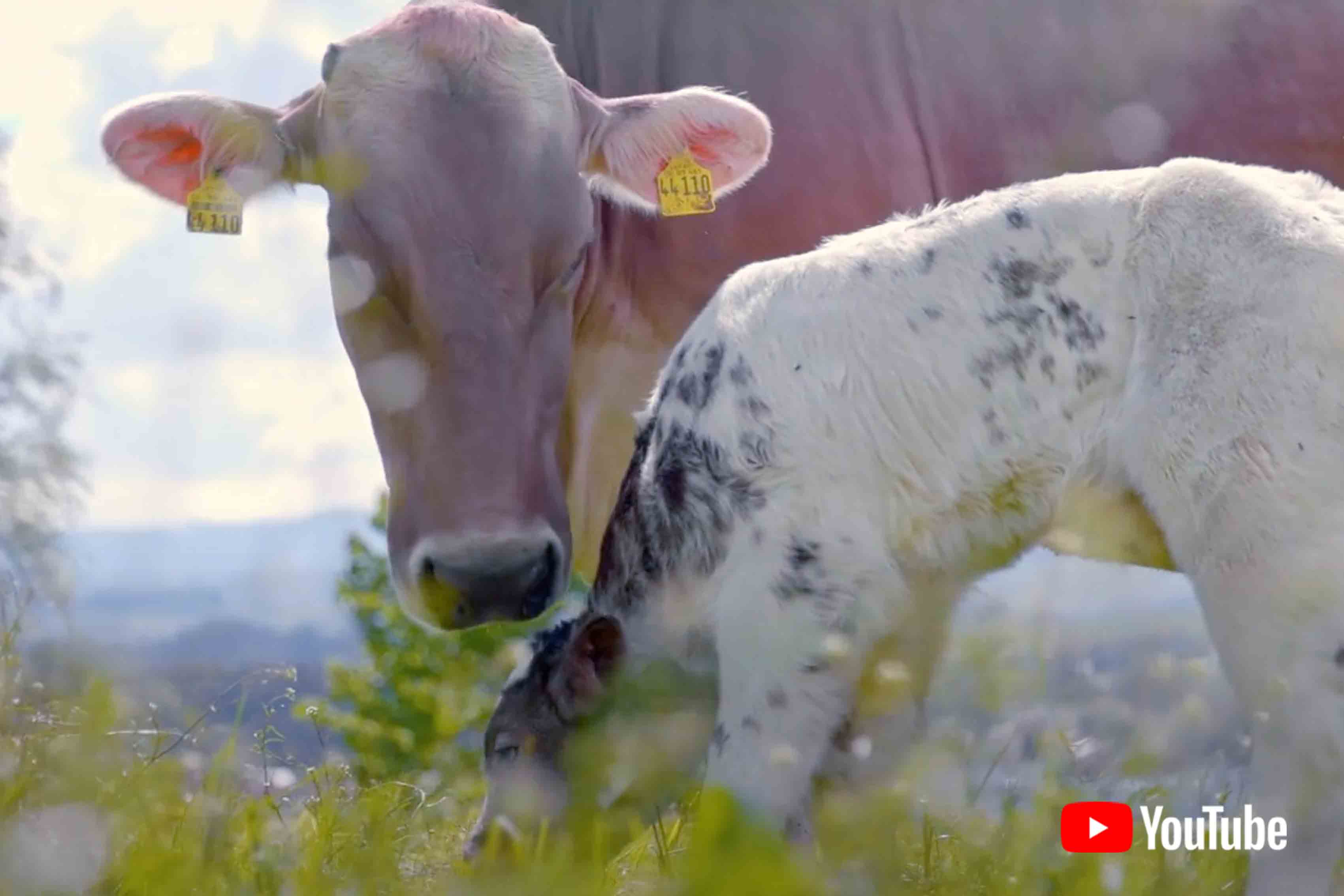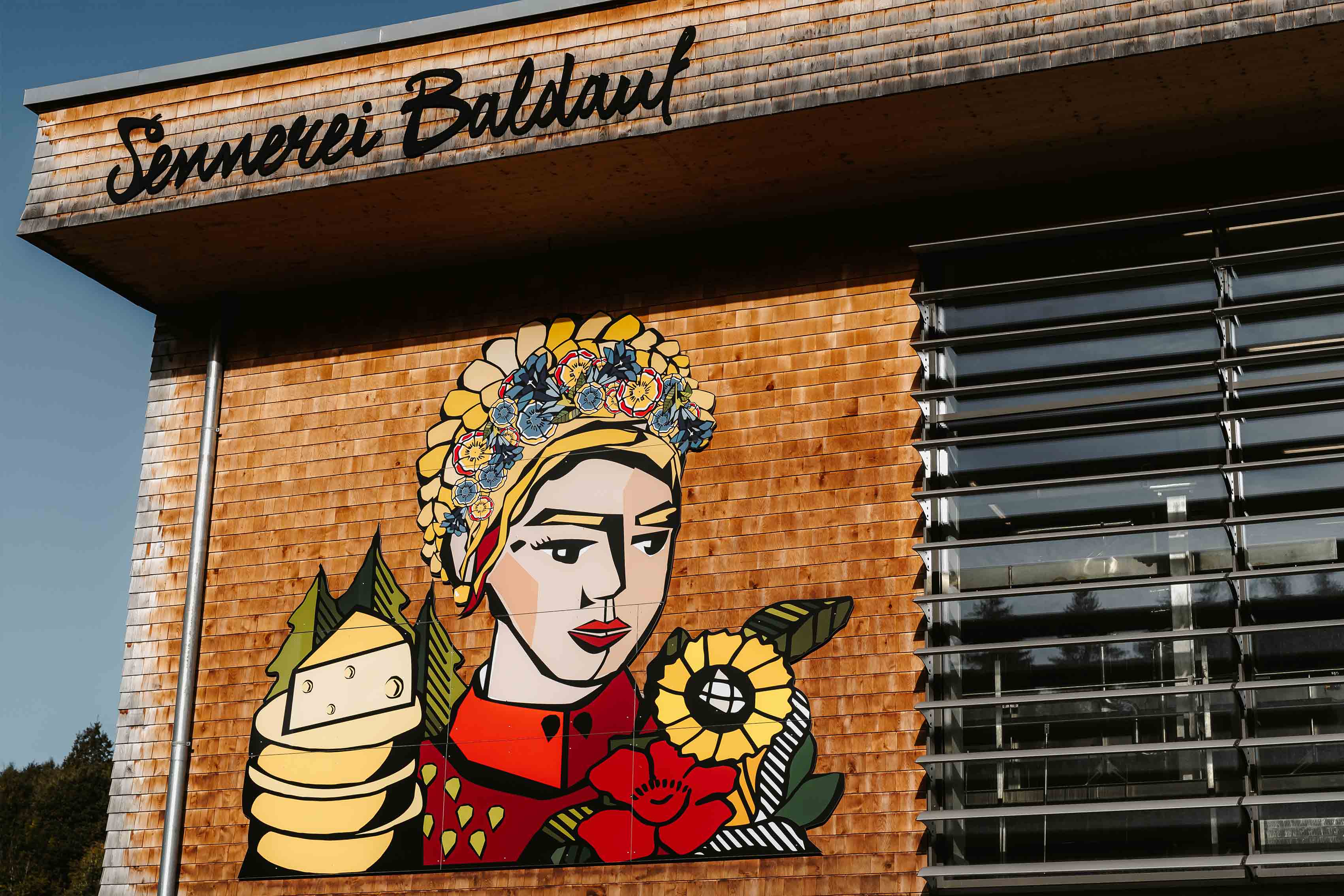
Alpine dairy
In 2019, the start of construction of our first own dairy in Gossholz was an absolute novelty in the company's history, taking us a big step forward in environmental protection. The energy efficiency of the dairy is optimised so that CO2 emissions can be largely neutralised.
Since the beginning of 2022, our production at the Goßholz site and in the alpine dairy in Hopfen has been officially climate-neutral, and the greenhouse gases (CO2) that are still produced are offset.
Transport
Thanks to whey thickening (4-fold concentration) and centralised production, we save a total of almost 100,000 lorry kilometres, which corresponds to 2.5 times around the world (one lap = approx. 40,000 km). Where whey used to be transported directly from the boiler for further processing, we can now thicken it so that it has less volume and we save valuable kilometres.
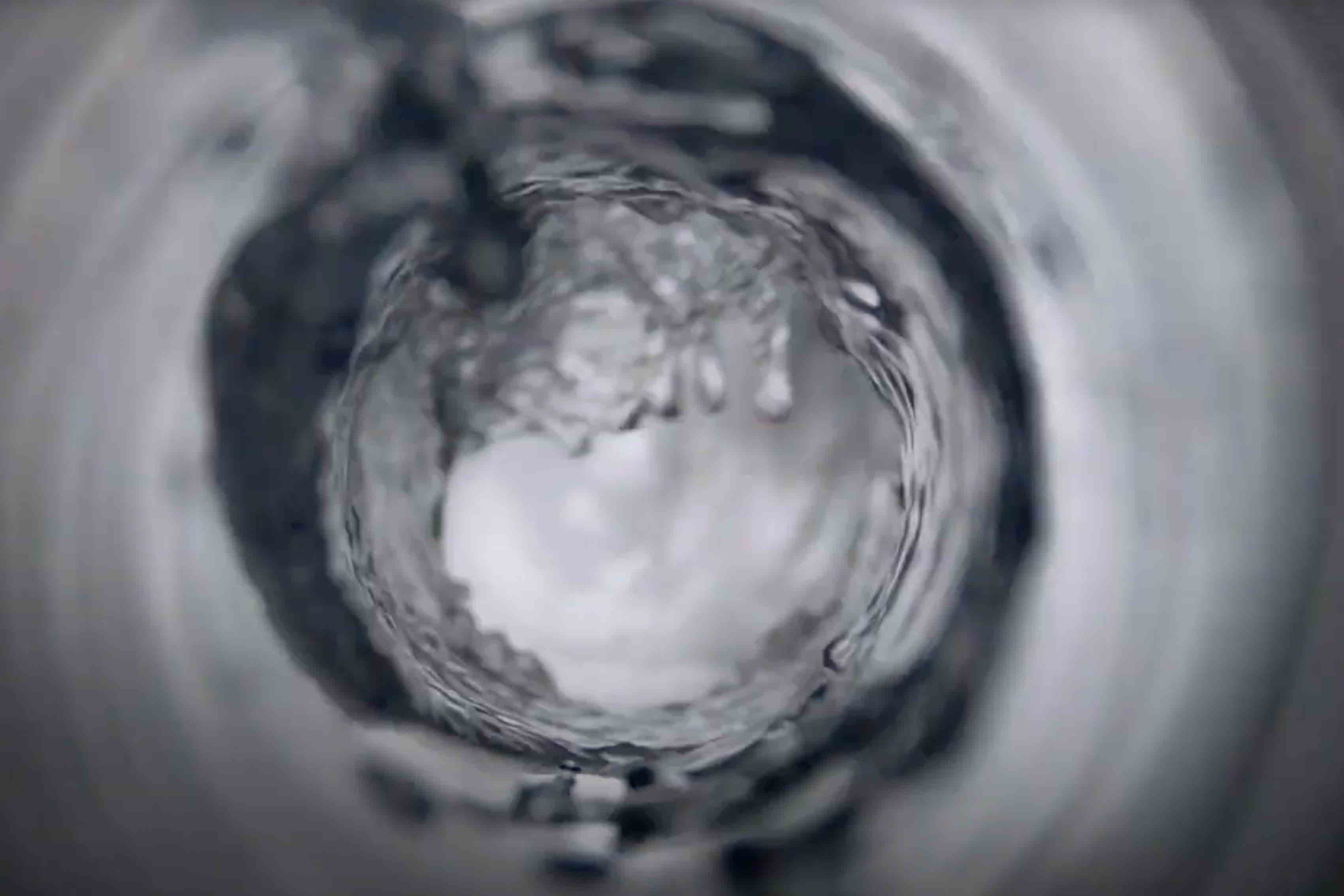
Water
During the whey thickening process, permeate is produced, which is whey water that is used for cleaning and as cooling water. This enables us to save 25m³ of fresh water every day, which is equivalent to around 167 full bathtubs.
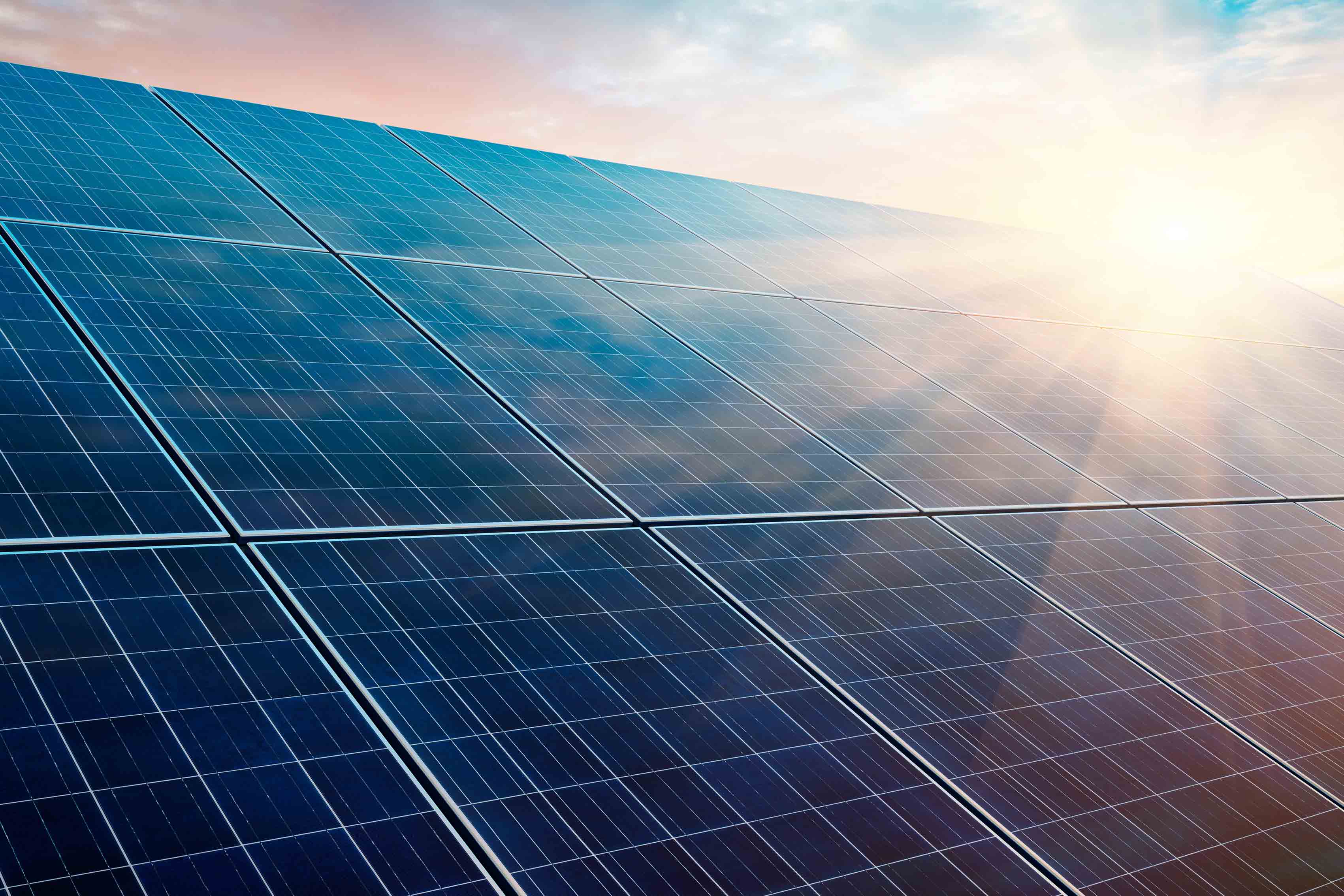
Electricity
Our in-house photovoltaic system covers half of the electricity consumption for the entire company, with all of the purchased electricity coming from hydropower. In summer, we will probably even be able to switch off the combined heat and power plant, as the electricity from the photovoltaic system will be sufficient to supply the entire company with electricity.
Process energy
Thanks to our heat exchanger, thermal energy can be saved directly during the cheese-making process. The organic pasture milk arrives at around 6 degrees and is heated to 32 degrees for cheesemaking. We need heat energy for this, while the 35 to 50-degree whey produced has to be cooled with cold energy. Our heat exchanger uses cold energy from cold milk to cool warm whey and vice versa. This means that over 50% of the cooling and heating energy required is recycled.
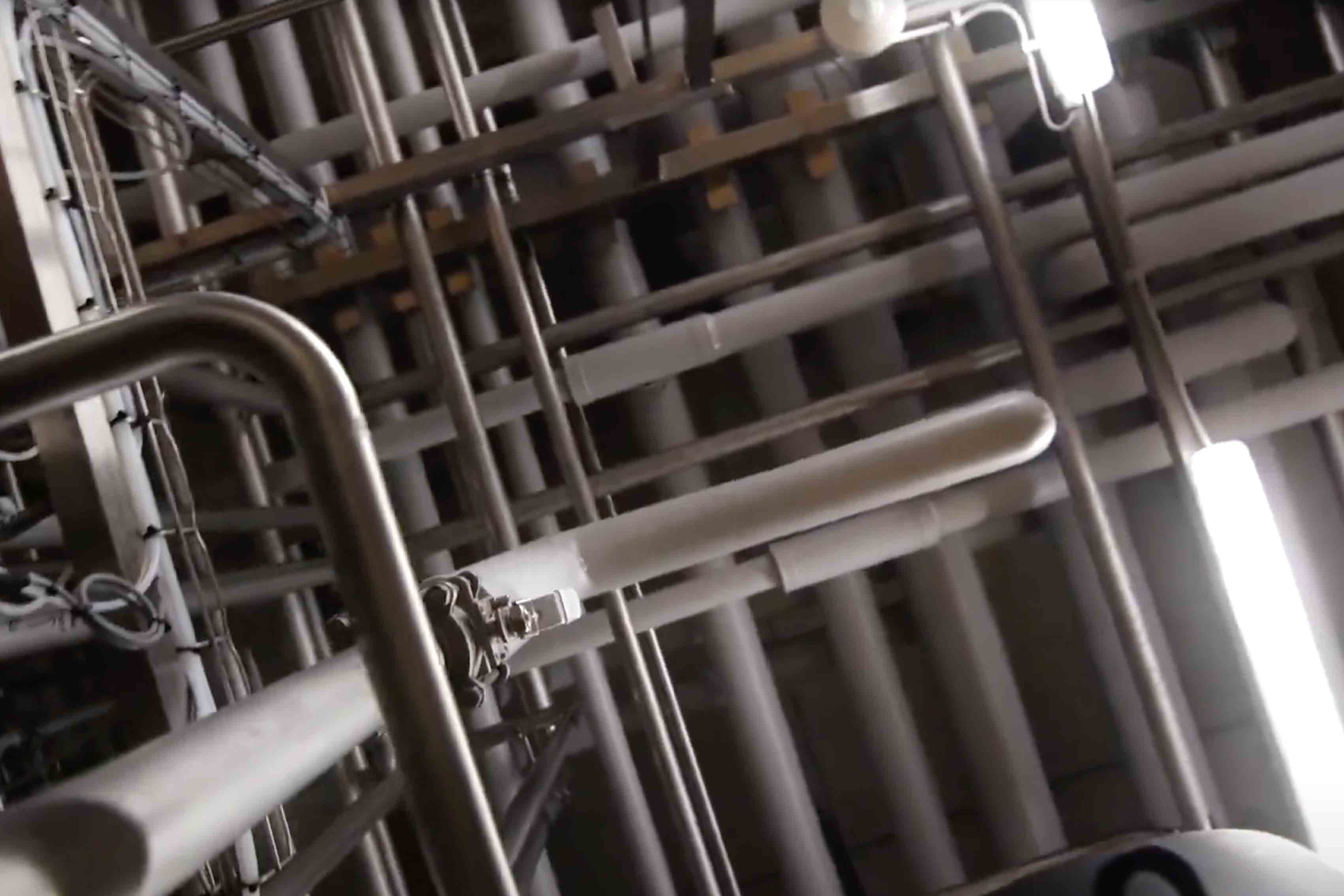
Heating
Our chiller is equipped with a heat recovery system – so we use it as a heat pump at the same time and generate all our heating and hot water. The heat pump is a machine that absorbs thermal energy from a reservoir at a lower temperature and transfers it as useful heat to a system to be heated at a higher temperature.
Pasture milk
This type of milk is the most natural of its kind. As the name suggests, the diet of a hay-milk cow includes lots of different grasses and herbs – in summer there is a variety of forage plants in meadows and pastures, and in winter healthy, farm-grown hay. Our traditional, regional Allgäu Brown Swiss cow breed causes significantly less trampling damage due to its lower weight, which protects the sensitive swards from erosion and thus avoids permanent reseeding. Plants also get the impulse to grow when cows graze. The plant density on the meadows thus grows in a natural cycle and the farmer saves on fertilisers that would have to be used on heavily used areas. Even when it comes to promoting biodiversity our hay-milk farmers are way ahead when it comes to sustainability: they let meadows and pastures grow longer and only mow when grasses and herbs have flowered. In addition, mountain areas and the Alps are not misappropriated, but used traditionally and economically, so that the forest cannot spread arbitrarily onto meadows and pastures.
Our own natural cheese cultures
A look into the future
